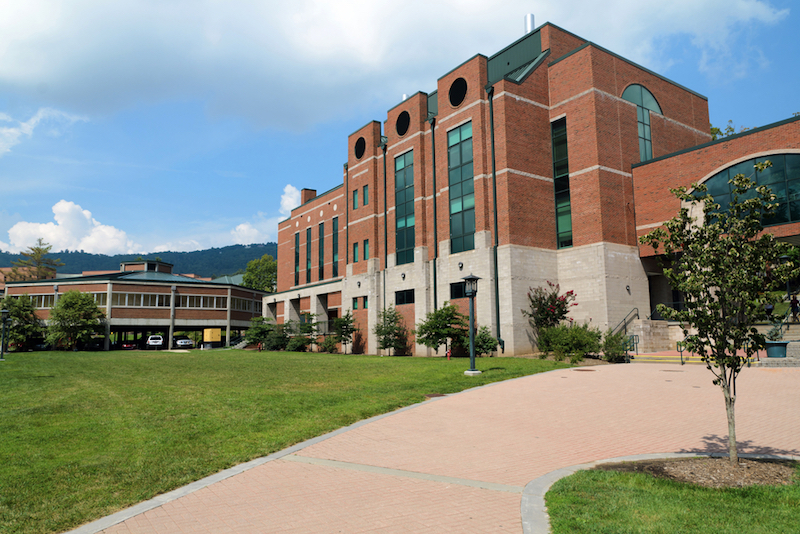Why Change is Here for Higher Ed According to Ben Corpus
Branded Content by Cosmic Press
The following is an article by Ben Corpus, a higher education executive, and consultant that discusses several approaches that can advance higher ed out of antiquated operations.
About 90% of all college students in the US are enrolled in institutions that are in dire need of change. It is reported that more than 500 colleges revealed indicators of financial challenges prior to Covid-19, and more than 50 have closed or merged in the last five years.
While about 1.5 million students enroll in the Ivies, highly elite privates, and the 63 AAU institutions across the country, another 17 million or so are enrolled in colleges that are in need of significant structural alignment given market changes related to evolving learning styles, rapid industry innovations, global competition, new technology, and an unprecedented and unpredictable political landscape that is understandably skeptical of their business model.
Faculty Drive the Bus(iness)
While it’s often said that without students, there would be no colleges, however, teachers who deeply understand learning are really at the core of education. Frankly, of all the parts within the higher ed business model, the most important is the faculty. Historically, however, faculty deployment and traditional university governance and structure have shackled change in higher education and inadvertently prevented needed economic evolution to respond to efficient organizational structure, new financial models, new and effective teaching techniques, and how learning outcomes are determined.
The old-time machinery of higher ed within the modern ways we learn and work has negatively impacted responsive growth and unknowingly infected the entire enterprise down to its oil and cogs. Traditional shared governance, an established machinery component, is sacred given that many who hold it closely are seasoned and tenured (an honor earned through productivity in teaching, publications, research, and service over a certain period of time).
Those who earn tenure are asked to serve on the very committees that assure governance is a privilege not susceptible to potential tyrannical whims. Shared governance, a standard that is not merely a cultural requirement but an accreditation “must,” places stakeholders in critical roles (department and committee chairs) of oversight and management, many of which drive planning and decision making. Without accreditation, there can be no state and federal funding – like grants, support for land and facilities, and financial aid for students.
We got here, how?
About 40 years ago, 70% of faculty were tenured or on the tenure track at colleges; now, that figure has dropped dramatically. The US Department of Education reported that about 76% of college faculty are now off the tenure track, meaning they are part-time adjuncts and do not have access to tenure. This is an estimated 1.3 million faculty out of a rough total of 1.8 million.
Over that time period, college budgets have indeed suffered. For example, in 2016, public funding for public two- and four-year colleges from states was more than $15 billion below the amount they received in 2007.
Gradual Dependence and No Way Out
Gradually, over the past two decades, university administrators have realized that if they hire more part-time faculty without tenure, they save millions in full-time salaries, health and benefit costs, and money needed to renovate and build facilities. They have found significant savings by influencing the resources department chairs have to hire. As the number of inexpensive adjuncts grew and college budgets shrank, there was often no return to full-time faculty hiring. Paying an adjunct $18,000 for six courses in the fall and spring terms, for example, is far more economical than paying $70,000 a year for a full-time faculty member who’d teach the same courses.
The Time for Change is Now
Adjunct faculty are the forgotten propellants for higher ed’s economic model. Typically, the more talent you have, the more experienced you are, and the more value you add, the more you are sought, and the more you are paid. Even students and start-ups are addressing college learning needs with relevant economic models at lightspeed compared to higher ed. Outlier.org has developed edu-tainment in calculus, and Knack, for example, has developed a platform that is essentially the Uber for college tutoring. A student hops on the app, finds a subject-matter expert whose tutoring reputation has been posted through reviews, bids on a fair hourly price, and schedules meet times within literally seconds. Florida Poly recognized how the untapped talent of top students and an innovative app could help mitigate learning loss during the pandemic and is ushering in huge returns.
Three Ways Change Can Happen
Globally, we are facing significant teaching and learning challenges, particularly in STEM (science, technology, engineering, and mathematics). By 2025, it is estimated that there will be over 3.5 million unfilled STEM positions in the US alone. Despite these industry demands and enormous career and financial opportunities, we as a nation continue to struggle to recruit, educate, and inspire enough students sufficient enough to plug and fill a leaky and narrow STEM pipeline to fill the gap.
Certainly, one way to advance higher ed’s old school machinery is to re-fashion the business model. Like Missouri’s moves a few years ago, policymakers in Iowa recently submitted legislation to eliminate tenure in colleges. Still, other states are looking to gradually disable tenure through legislative actions.
Yet other, more fitting approaches include institutions that proactively innovative on their own by developing faculty hiring and promotional processes that meet faculty, student, and institutional needs without infecting the entire operation with bureaucratic malaise. Nationally ranked Florida Polytechnic University, centered between Tampa and Orlando, developed organizational structures with an entrepreneurial eye to cultivating talent, curricula responsive to industry, and hiring practices that can be responsive to an ever-changing economy. Furthermore, while 51% of faculty at most colleges nationally are part-timers, Florida Poly has taken a different approach with a faculty body that is only 5% adjunct.
A Faculty Marketplace
Another approach is to build an entirely new economic model for faculty hiring that aligns with today’s gig economy. To relieve the out-dated and inefficient way faculty are now hired, we are developing a platform that empowers adjuncts to be seen, identified, and placed and universities to find top, available talent and seamlessly hire, assess, and re-hire without the friction of the massive bureaucracies that currently exist. By using validated teaching reviews, secure credentialing affirmation, and inter-connected institutional systems, a department chair can hire an adjunct for the class needed, the time desired, at the rate offered with simply a few clicks on an app.
For part-time faculty, a faculty marketplace will significantly help them identify and land jobs, offer more choice, help them gain exposure, increase their reputation, improve the management of their schedule and potentially maximize their compensation while connecting with an online community of peers.
These three approaches can advance higher ed out of anachronistic operations that impact teaching, learning, and budgets. Such change can fuel responsive institutions to serve students, support faculty, and show efficiencies to inquiring, budget-conscious policymakers.
About Ben Corpus
Ben Corpus is currently Vice Provost for Enrollment at Florida Polytechnic University, a selective, public university in the state university system of Florida. He has served as Vice Provost for Enrollment Management at the University of Texas at Austin, Vice President for Enrollment Management & Student Affairs at Baruch College, Vice President for Enrollment and Student Affairs at Hostos Community College, and Chief of Staff to the President at Plattsburgh State University, in addition to administrative positions at NYU and the University at Albany.
Branded content furnished by our promotional partners. The Daily Sundial editorial staff is not involved in its production. Content does not reflect the views or opinions of the editorial staff.










